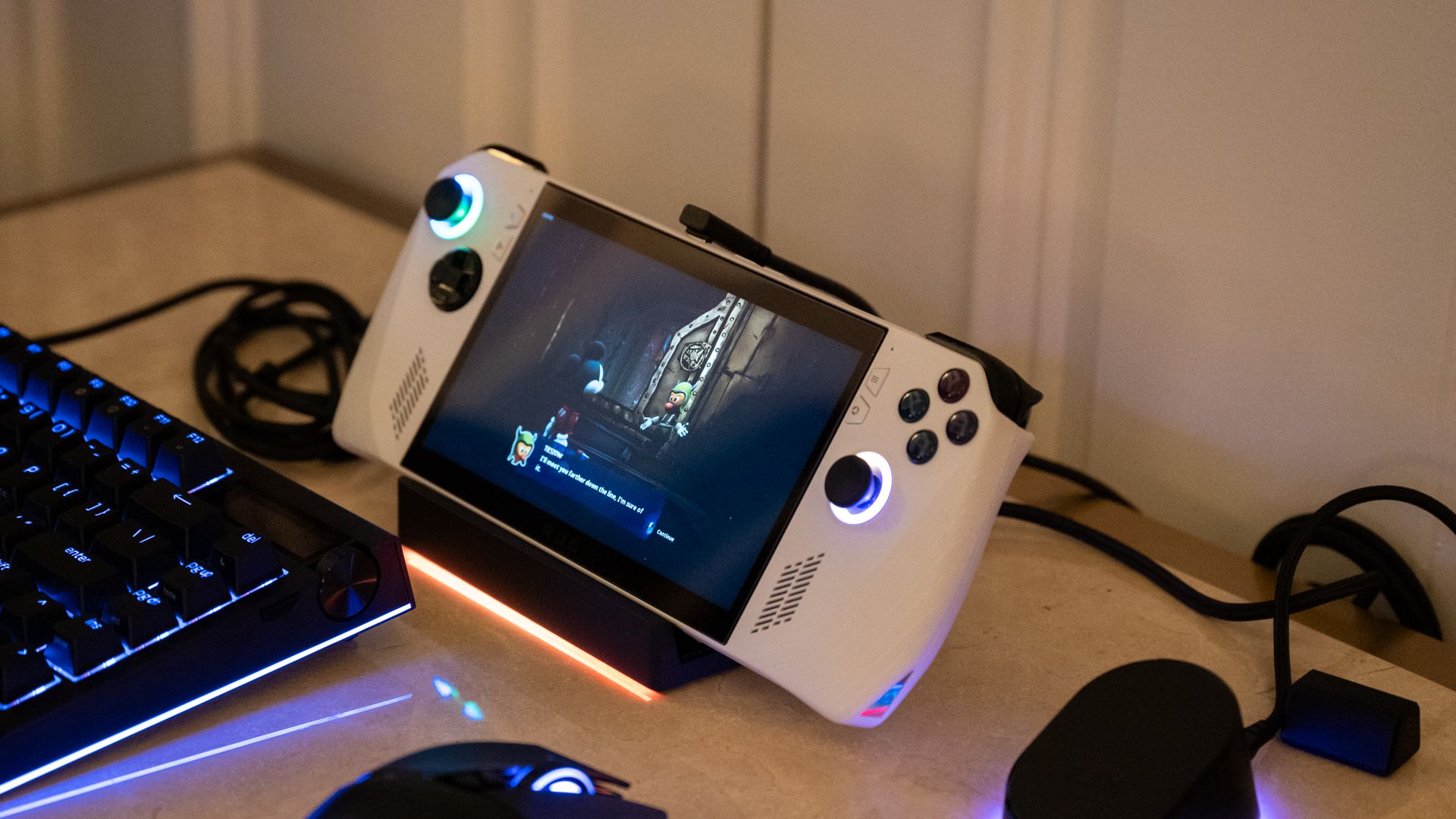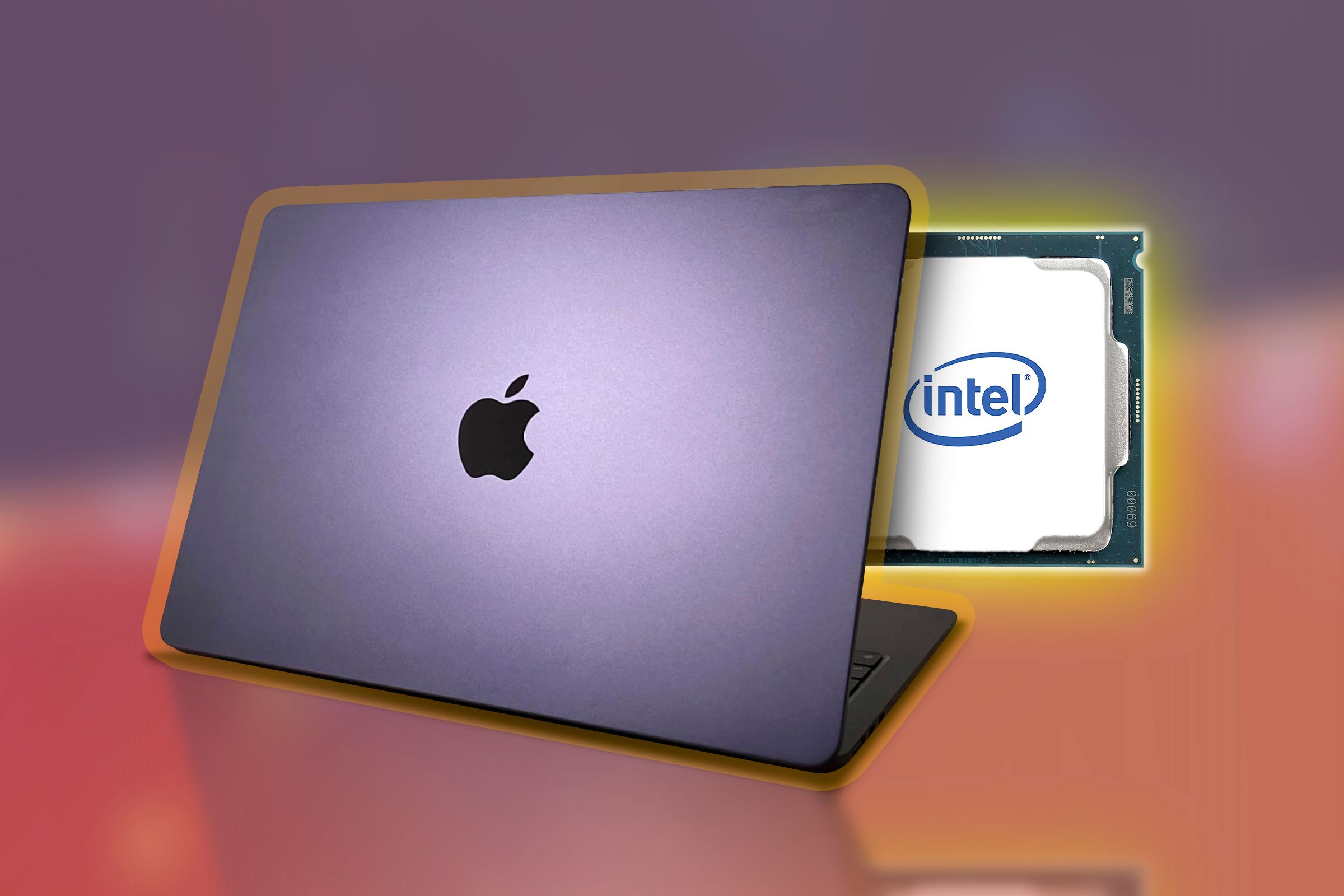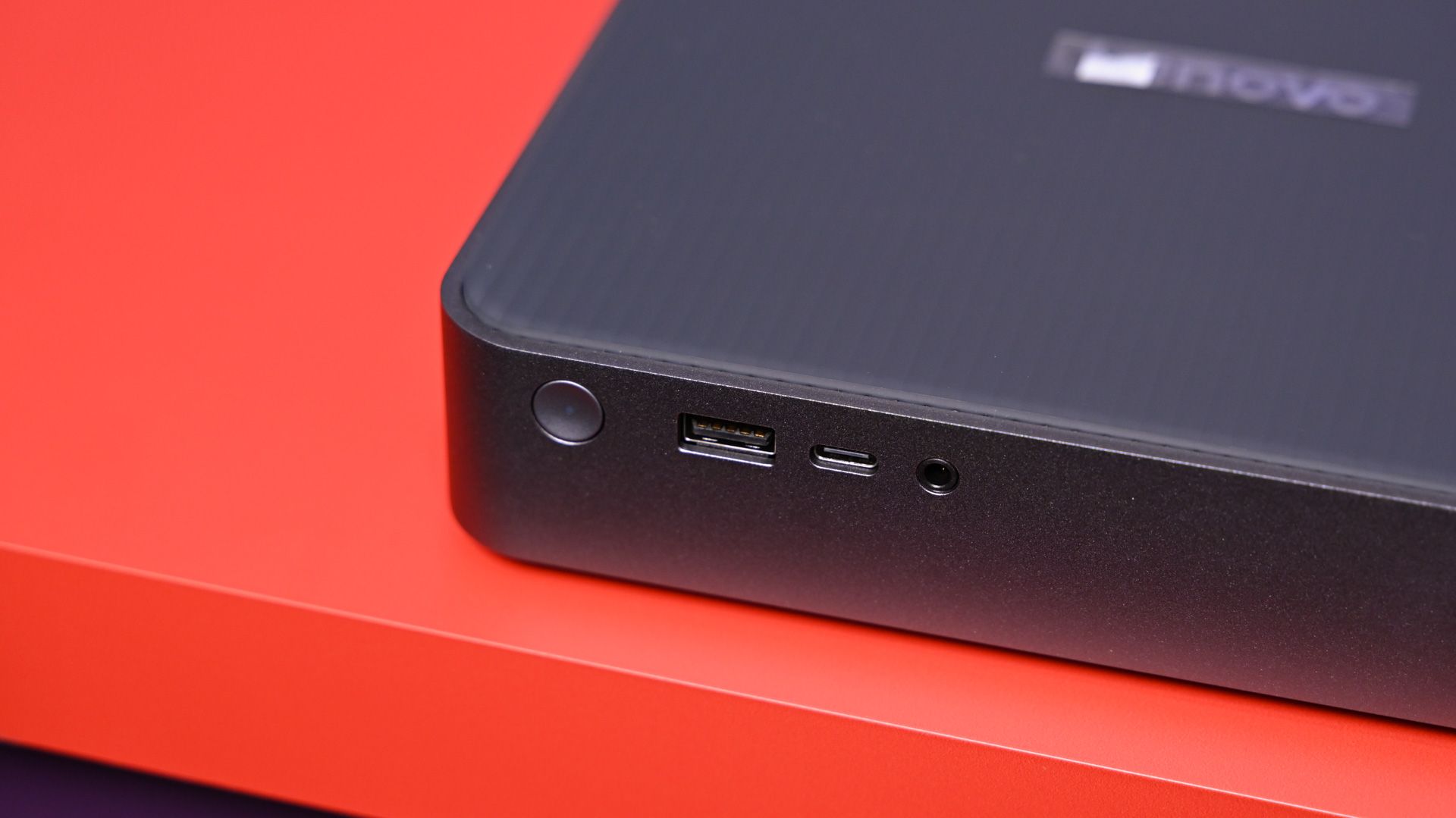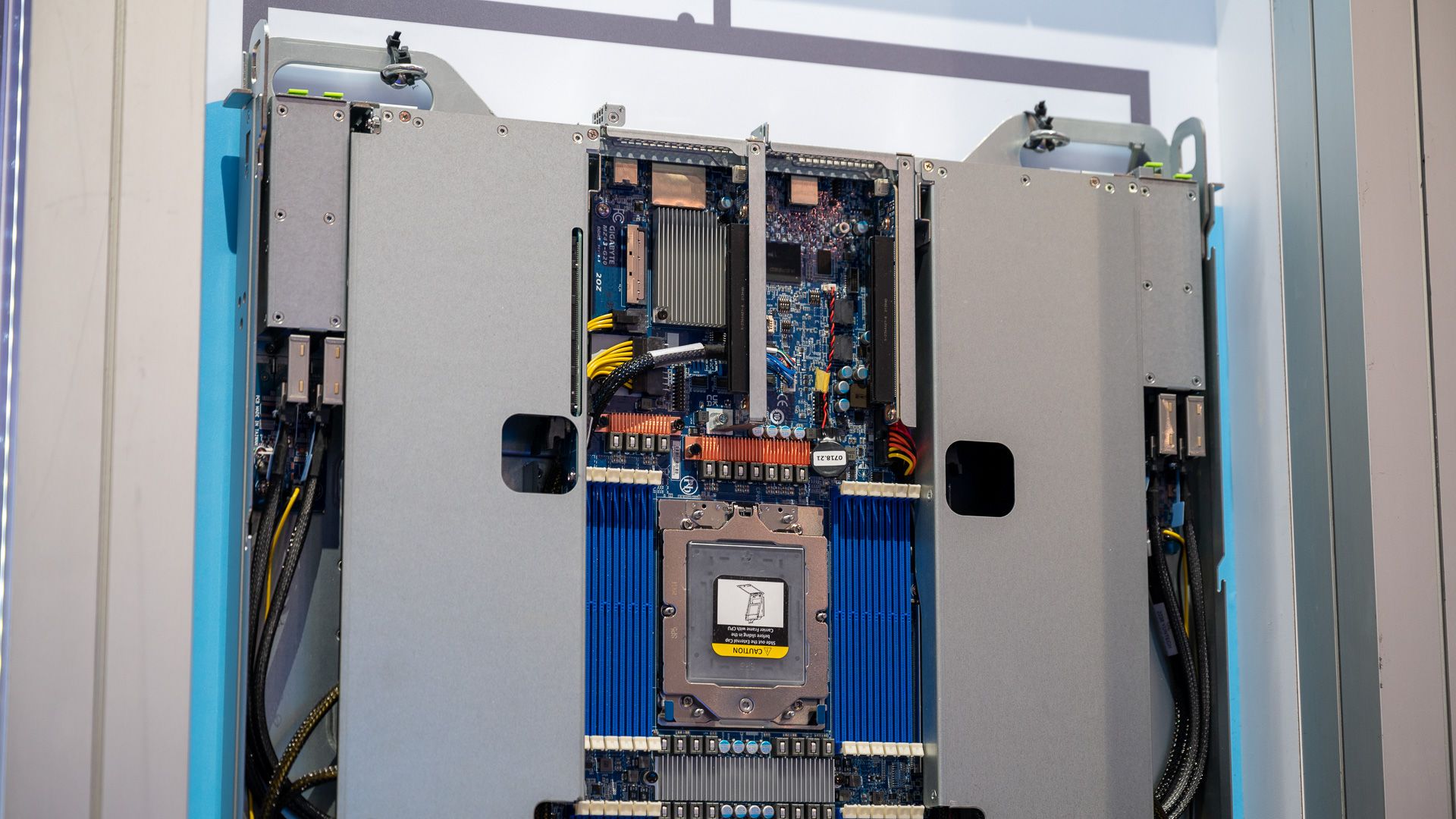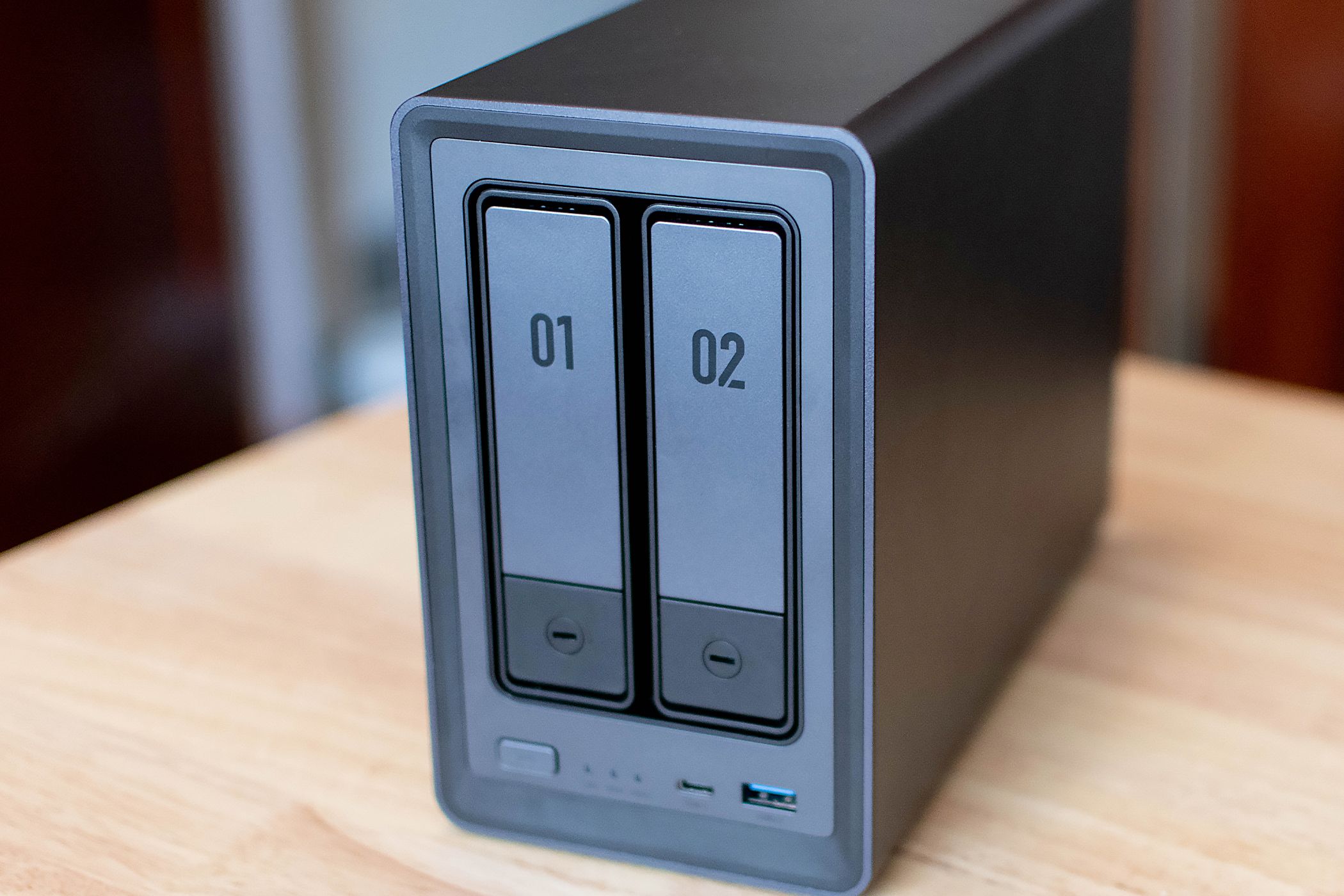Quick Links
Got a spare graphics card lying around that you’d like to use as an eGPU, but don’t own a Windows laptop, the prime eGPU candidate? No worries, there’s a good number of devices you can plug an eGPU into.
1
Handheld Gaming PCs
If you own a PC gaming handheld equipped with USB 4 or Thunderbolt ports, you can plug an eGPU into it and make games run faster than ever, as long as the GPU in question has enough horsepower to run modern games at playable frame rates, of course.
The good news is that a good chunk of newer handheld gaming PCs come with USB4 or Thunderbolt ports. For instance, the ASUS ROG Ally X and the Lenovo Legion GO pack multiple USB4 ports, while the new MSI Claw features multiple Thunderbolt 4 ports.
The bad news is that arguably the best PC gaming handheld, the Steam Deck, doesn’t officially support eGPUs because it doesn’t rock a USB4 or a Thunderbolt port. That said, you can add an eGPU to your Steam Deck if you’re ready to remove its internal SSD.
The original ASUS ROG Ally features a proprietary port that only works with the first generation of ASUS’s XG Mobile eGPUs, but the handheld doesn’t support regular eGPUs.
2
Intel-Based Apple Computers Rocking Thunderbolt Ports
Got an old Intel-based Mac, whether a MacBook, Mac Mini, or an iMac with Thunderbolt 3 connectivity? If so, and if the Intel CPU inside it is powerful enough to run newer games, but the GPU part of the equation is the bottleneck, you can add an eGPU and play some games or use it for GPU-intensive workloads.
To be able to use an eGPU with your Intel-based Apple computer, it has to run macOS High Sierra 10.13.4 or later in addition to having Thunderbolt 3 ports.
Newer AMD Radeon graphics cards should work without issues on Intel Macs, excluding Radeon 7000 and 9000 graphics cards. As for NVIDIA GPUs, you’ll most likely have to use them via Boot Camp. There are some reports of Intel Mac owners using NVIDIA GPUs without Boot Camp, but only for productivity, not gaming.
Apple Silicon-powered Macs do not support eGPUs.
3
Raspberry Pi 5 (And Other Single Board Computers)
A full-sized desktop graphics card hooked to a Raspberry Pi 5? It’s possible, as long as you’ve got a Raspberry Pi 5 along with: a HAT you’ll use to convert the Pi 5’s PCIe FCC to an M.2 slot, an eGPU dock compatible with OCuLink and a PSU, an M.2 to OCuLink adapter and an OCuLink cable, and a spare graphics card. Alternatively, you can use a HAT that covers the PCI FCC to a x4 PCIe slot and mount the card directly to the Raspberry Pi 5.
Jeff Geerling has created a handy guide on how to get the whole thing working, so if you’re bored or genuinely need an external GPU for your Raspberry Pi 5 to run LLMs locally, for example, this could be a great weekend project.
Other uses include playing PC games, running demanding emulators, and video transcoding.
You can add eGPUs to a few other SBCs as well. For example, certain x86-based LattePanda SBCs compatible with Windows and Linux can work with eGPUs via an M.2 to PCIe adapter.
4
Mini PCs
Mini PCs have been growing in popularity in recent years, with many newer models featuring USB4, Thunderbolt 4, or OCuLink connectivity. Considering that the best mini PCs come with beefy, high-end laptop CPUs, you can hook an eGPU to a mini PC and create a respectably powerful, ultra-compact gaming PC.
Some mini PC models, like the Beelink GTi12 Ultra and the Beelink GTi14 Ultra, come with physical PCIe x8 slots. A proper PCIe x8 slot allows you to plug the PC into the Beelink EX Docking Station, add a graphics card, and end up with a gaming PC setup that can fully utilize high-end graphics cards such as the RTX 4080 or the RTX 5080.
5
Server Racks
Own a server rack you’ve been using as a home lab, home server, or for some other purpose and want to add a GPU to it but don’t have the room? You can use a backplane with PCIe x16 slots, hook it to the rack, and create an eGPU setup you can populate with multiple graphics cards.
Now, this setup is super expensive, and it’s much easier to create room inside the rack for the GPU or get something more spacious. But if you really want to boast about running an eGPU setup on your server rack, it’s technically possible to pull it off.
6
NAS
You can add an external graphics card to certain NAS devices via a Thunderbolt expansion card. You’ve got to use an eGPU enclosure, and the card may work with some NAS-specific operating systems and even be used for certain workloads. However, this is a messy business that requires a ton of tweaking and hacking.
If you’d like a step-by-step guide and own a Synology DS1821+, someone on Reddit created an in-depth guide on how to add a GPU to it. The setup requires a PCIe riser cable, so if you get a longer riser cable, you can MacGyver an eGPU setup by installing the graphics card outside the NAS. Certain ASUSTOR NAS devices support eGPUs as well, as shown by the Dawid Does Tech Stuff YouTube channel. The experience isn’t great, but the setup works after a fair bit of tweaking.
Of course, if you’ve got a DIY NAS running Windows or a full-fledged Linux distro that plays nice with graphics cards, you can add an eGPU in case the NAS has Thunderbolt 3/4 or USB4 connectivity or can host a Thunderbolt expansion card. And if you’re using a Mini PC with OCuLink support as a NAS, you can use it instead and get more performance since OCuLink has higher bandwidth than Thunderbolt 3/4 and USB 4 (64Gb/s vs 40 Gb/s).


